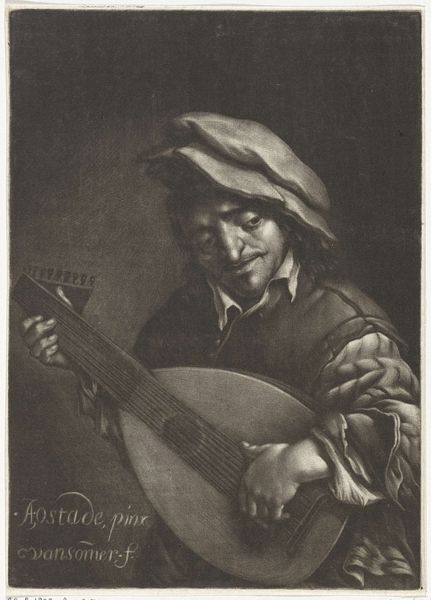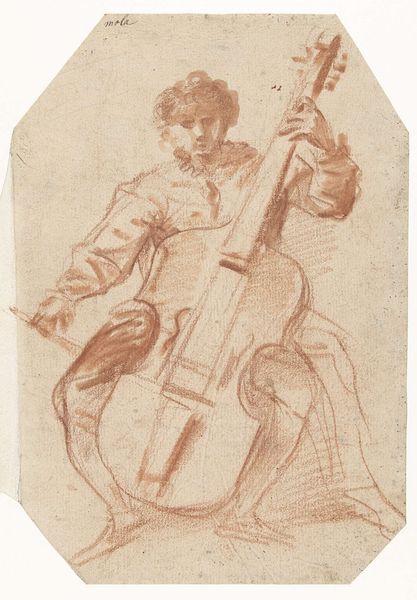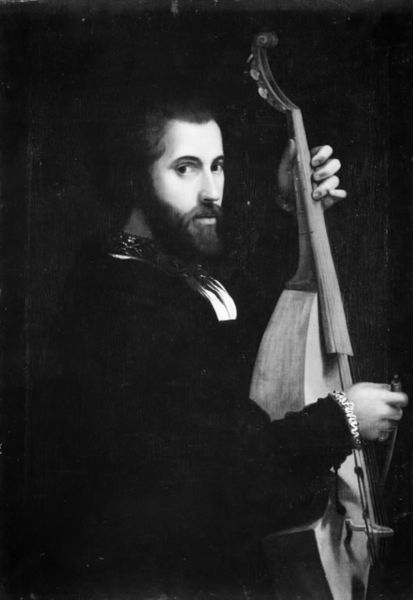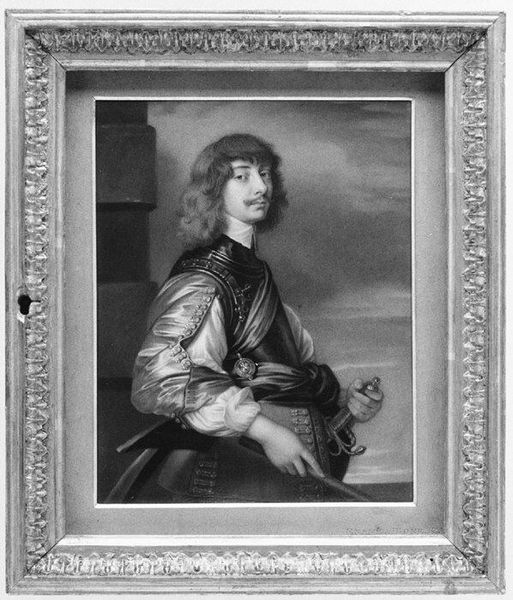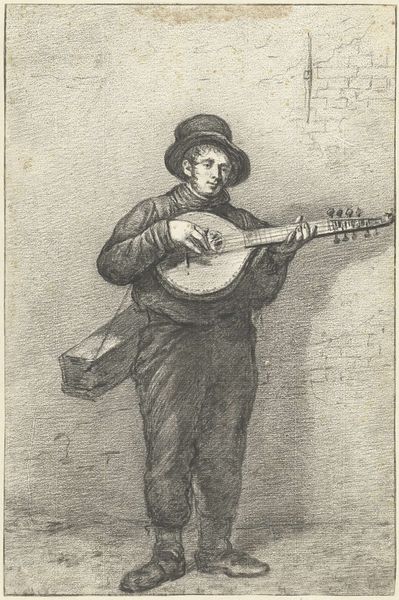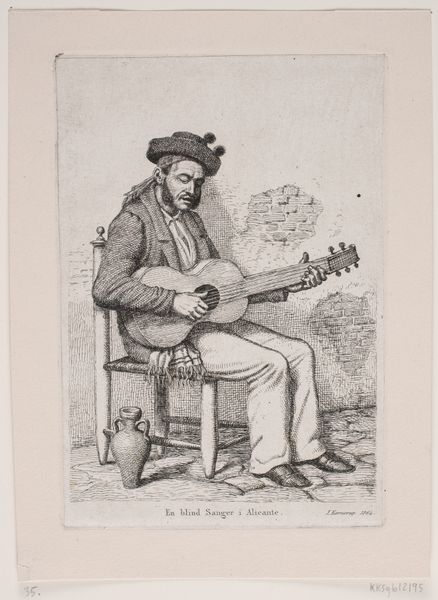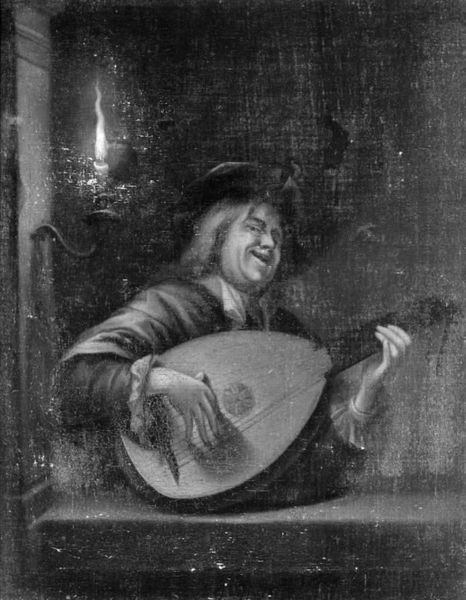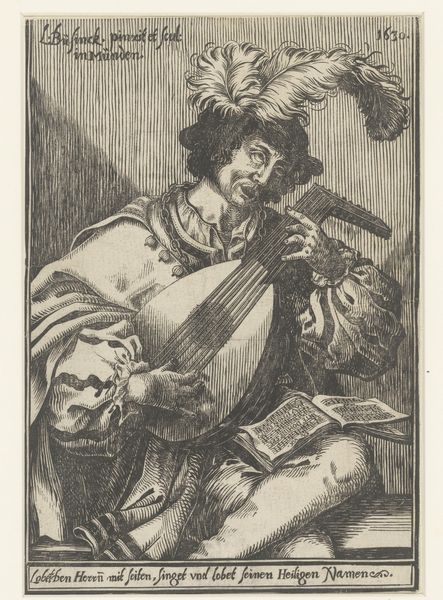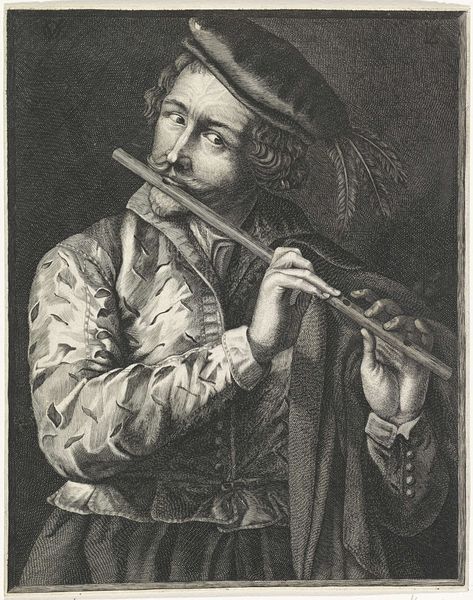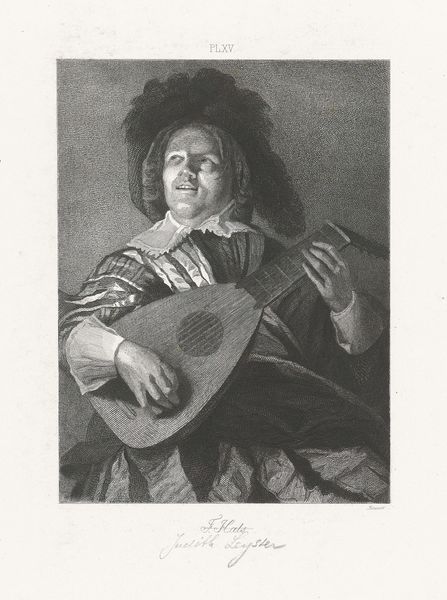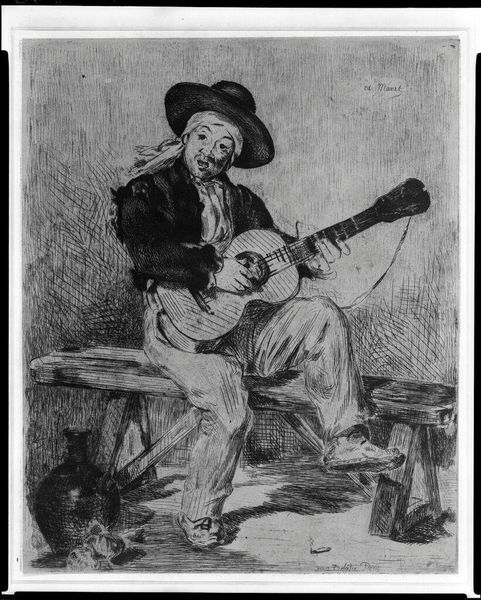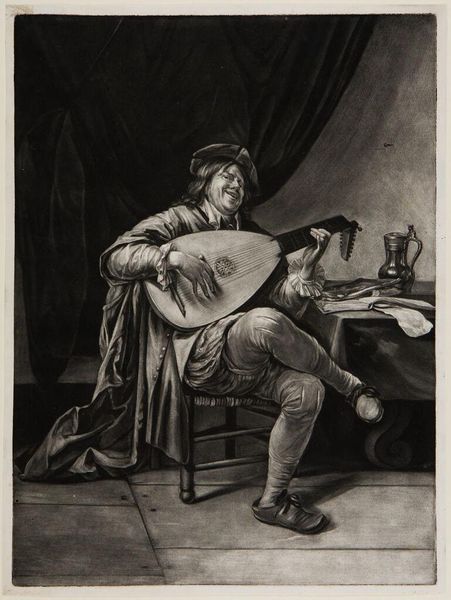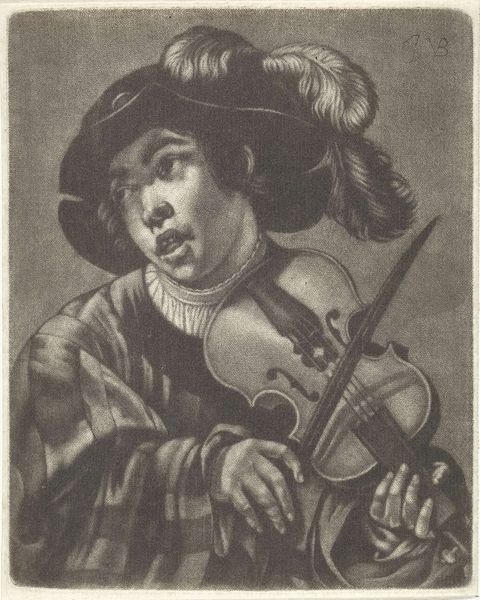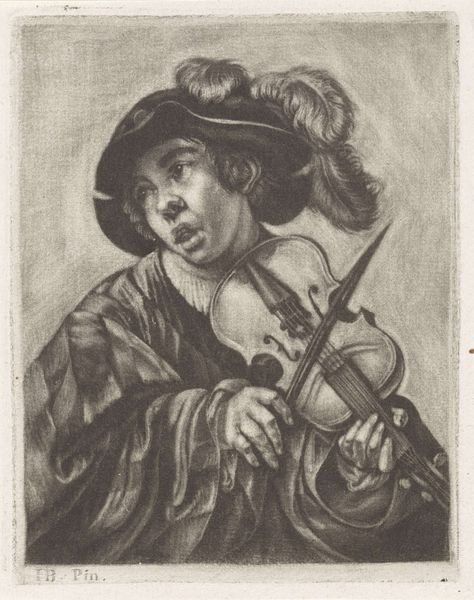
Man with a Lute 1785 - 1799
0:00
0:00
textile
#
portrait
#
medieval
#
textile
#
decorative-art
Dimensions: H. 48 x W. 34 inches (109.2 x 116.8 cm)
Copyright: Public Domain
Editor: So, this is “Man with a Lute,” created sometime between 1785 and 1799 by the Imperial Russian Tapestry Manufactory. It's a textile, hanging here at the Met. It's amazing to me that this portrait-like image is woven rather than painted. It feels... very formal. How would you interpret this work? Curator: It's crucial to see this within the context of Imperial Russia. The tapestry manufactory was a direct instrument of state power. Luxury goods were part of asserting dominance, but also participating in a global network of influence through trade and gifts. The 'medieval' look is interesting too, almost like a deliberate throwback. Do you think that choice of imagery would be seen as reinforcing a kind of nostalgic claim to cultural authority? Editor: Absolutely, it evokes that sense of looking back, maybe idealizing a past that never quite existed. But what's so interesting to me is, was this also seen as a statement on national identity? I mean, Russia, even then, was grappling with its relationship to Europe and its own unique history. Curator: Exactly. By choosing a ‘romantic’ past, they could selectively build a national narrative, one divorced from contemporary social problems or revolutionary ideas circulating elsewhere in Europe. Tapestries like these were never 'just' decoration; they were active participants in constructing public memory and shaping perceptions of power. Notice, too, how textile, traditionally a ‘domestic’ craft, becomes a medium for very public, political statements. Editor: That's such a good point! I never thought about how the medium itself could be making a statement. Curator: The location where it would hang is also very significant - likely a palace or state building where the aristocracy or dignitaries would be present. That carefully controlled environment influences how such a visual argument could be staged. Editor: Wow, it changes how I see it entirely. From artwork to, as you say, visual argument. I'll remember that! Curator: Me too. Thanks, it’s interesting to consider how seemingly "decorative" works can reveal underlying power structures and political ambitions.
Comments
No comments
Be the first to comment and join the conversation on the ultimate creative platform.
